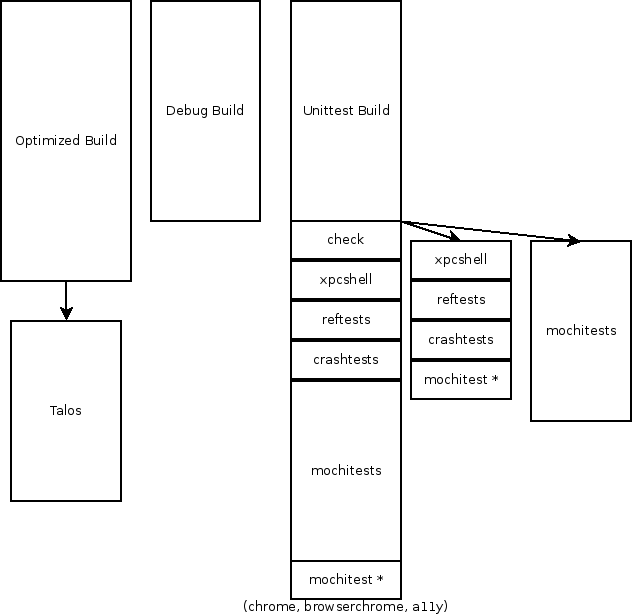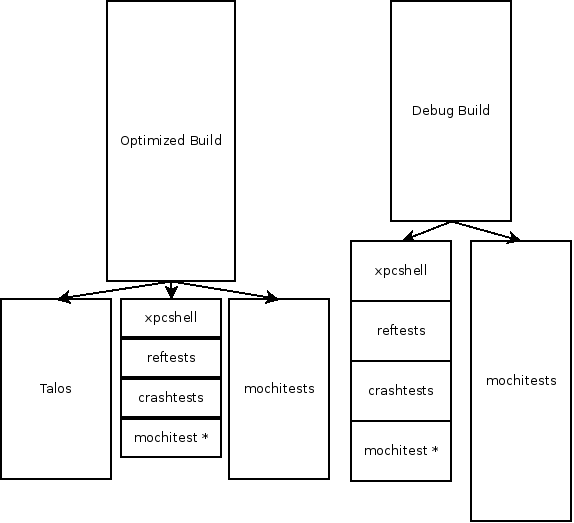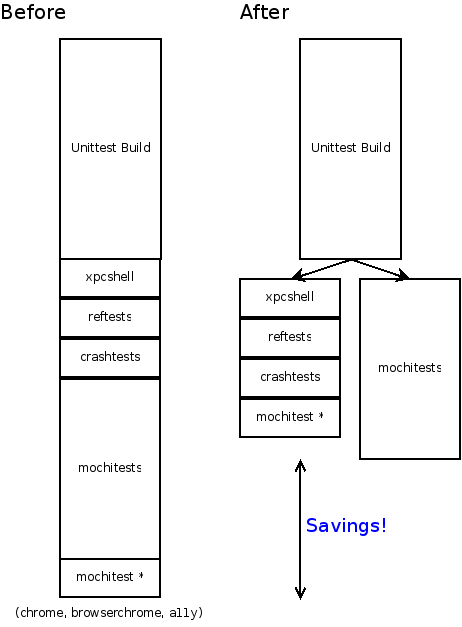Mozilla has been quite involved in recent buildbot development, in particular, helping to make it scale across multiple machines. More on this in another post!
Once deployed, these changes will give us the ability to give real time access to various information about our build queue: the list of jobs waiting to start, and which jobs are in progress. This should help other tools like Tinderboxpushlog show more accurate information. One limitation of the upstream work so far is that it only captures a very coarse level of detail about builds: start/end time, and result code is pretty much it. No further detail about the build is captured, like which slave it executed on, what properties it generated (which could include useful information like the URL to the generated binaries), etc.
We've also been exporting a json dump of our build status for many months now. It's been useful for some analysis, but it also has limitations: the data is always at least 5 minutes old by the time you look, and in-progress builds are not represented at all.
We're starting to look at ways of exporting all this detail in a way that's useful to more people. You want to get notified when your try builds are done? You want to look at which test suites are taking the most time? You want to determine how our build times change over time? You want to find out what the last all-green revision was on trunk? We want to make this data available, so anybody can write these tools.
Just how big is that firehose?
I think we have one of the largest buildbot setups out there and we generate a non-trivial amount of data:
- 6-10 buildbot master processes generating updates, on different machines in 2 or 3 data centers
- around 130 jobs per hour composed of 4,773 individual steps total per hour. That works out to about 1.4 updates per second that are generated
How you can help
This is where you come in.
I can think of two main classes of interfaces we could set up: a query-type interface where you poll for information that you are interested in, and a notification system where you register a listener for certain types (or all!) events.
What would be the best way for us to make this data available to you? Some kind of REST API? A message or event brokering system?
pubsubhubbub?
Is there some type of data or filtering that would be super helpful to you?
 Our end goal is to run unittests on our optimized and debug builds. We would stop doing our current reference counting builds, since the debug builds also have reference counting enabled.
Our end goal is to run unittests on our optimized and debug builds. We would stop doing our current reference counting builds, since the debug builds also have reference counting enabled.
 To get there requires a few intermediate steps:
To get there requires a few intermediate steps:
 Splitting up the tests is a critical step towards reducing our end-to-end time, which is the total time elapsed between when a change is pushed into one of the source repositories, and when all of the results from that build are available. Up until now, you had to wait for all the test suites to be completed in sequence, which could take over an hour in total. Now that we can split the tests up, the wait time is determined by the longest test suite. The mochitest suite is currently the biggest chunk here, taking somewhere around 35 minutes to complete, and all of the other tests combined take around 20 minutes. One of the next steps for us to do is to look at splitting up the mochitests into smaller pieces.
For the time being, we will continue to run the existing unit tests on the same machine that is creating the build. This is so that we can make sure that running tests on the packaged builds is giving us the same results (there are already some known differences:
Splitting up the tests is a critical step towards reducing our end-to-end time, which is the total time elapsed between when a change is pushed into one of the source repositories, and when all of the results from that build are available. Up until now, you had to wait for all the test suites to be completed in sequence, which could take over an hour in total. Now that we can split the tests up, the wait time is determined by the longest test suite. The mochitest suite is currently the biggest chunk here, taking somewhere around 35 minutes to complete, and all of the other tests combined take around 20 minutes. One of the next steps for us to do is to look at splitting up the mochitests into smaller pieces.
For the time being, we will continue to run the existing unit tests on the same machine that is creating the build. This is so that we can make sure that running tests on the packaged builds is giving us the same results (there are already some known differences: